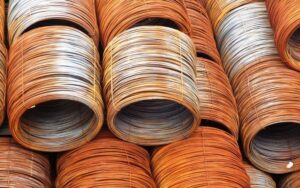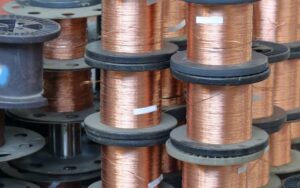From laboratory devices to electronics devices, electromagnetic coils have significant applications as the fundamental component of these devices. In several medical devices, you will find the use of electromagnetic coils to detect specific body functions. Ampere’s law is the foundation of manufacturing electromagnetic coils. On the basis of this law, manufacturers develop a current flow within the conductive wire and this current flow helps to generate a magnetic field around the wire.
When it comes to building devices, such as medical sensors, transformers, inductors, or electromagnets, electromagnetic coils are essential. There are two different ways to build these devices, such as i) the manufacturers can send an electric flow across the conductive wire to produce a magnetic field around the wire, or ii) they can build a magnetic field first around the interior of the electromagnetic coil so that current flow automatically gets generated within the conductive wire.
Electromagnetic Strength of the Coils:
The electromagnetic strength of the coils can differ depending on the requirements of the customers. When there is a need for higher intensity of the magnetic field, manufacturers place a magnetic material inside the coil. Manufacturers can also regulate the electromagnet’s strength by changing the strength of the current flow within the conductive wire. They can reverse the position of the electromagnetic poles by changing the direction of the current flow.
The Challenges for the Coil Manufacturers:
The necessity to design and build miniaturized state-of-the-art devices is a great challenge for manufacturers. Even though miniaturization is a challenge, we can not avoid that. Because the devices must have to be miniaturized to be able to reach some critical areas of our bodies without affecting body functioning. The tiny size of the coil is also essential to reduce the consumption of energy and to fit into the provided physical spaces.
The tiny size of the electromagnetic coils makes it difficult for the manufacturers not only to build the components of the devices but also to connect the components with their support systems. To overcome these difficulties, manufacturers require advanced techniques and equipment to wind the electromagnetic coils and develop connections between the components and the support systems.
What Should an Ideal Coil Manufacturing Company Possess?
An ideal electromagnetic coil manufacturing company should offer several facilities-
- The manufacturing company should conduct the entire production procedure very safely in order to avoid damage to the sensitive components.
- An economic mass production facility is essential to prepare a large number of coils at a time.
- The connection between the ultra-fine wires has to be very reliable, strain-free, and oxidization-free.
- Manufacturers need to maintain the high standard of the final product so that they meet tight tolerance requirements.
- It is important to ensure the high-quality and long durability of the components.
- The physical and electrical characteristics of the different micro-coils have to be the same for a particular application area.
- Finally, the manufacturers must use an automated production process to avoid human errors.
Ultra-Fine Wire Connections:
To maintain the tiny size of the electromagnetic micro-coils, manufacturers use very thin conductive wires. The diameter of this ultra-fine wire can be up to 9 microns. Because of this small diameter, it is quite challenging to wind the coils using these wires. Another essential task of the winding process is building a connection between two thin wires. Joining these tiny wires is not possible through traditional heat-based methods, such as soldering and welding methods. These methods can damage your wires as well as provide inferior connectivity, low durability, and oxidization on the joints.
Therefore, the manufacturers require efficient technology for the connectivity solution. The most efficient and popularly accepted solution to this problem is Thermal Compression Bonding Technology. This method helps manufacturers to build a connection between two similar tiny wires as well as two different wires with different materials and diameters.
The electromagnetic coil winding process has become incredibly easy and efficient with the help of advanced methods and modern robotic technology. Manufacturers now can join the ultra-fine wires and wind them to prepare micro-coils at high temperatures, while maintaining the tight tolerance requirements. Automated machinery systems have also a great contribution to the effective production of electromagnetic coils by avoiding human errors.




